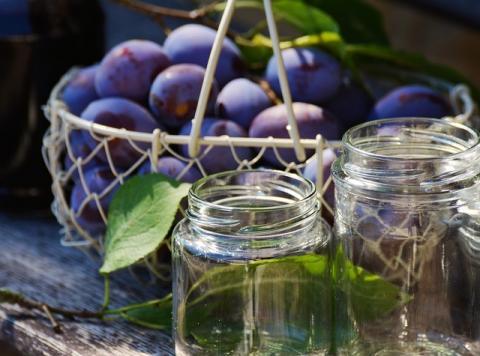
The arrival of the Spring Equinox is very exciting for foragers. We watch as the snow begins to melt away, looking for any signs of plant life. Our eyes scan looking for bright baby green shoots and any sign of blooming color.
Spring’s bounty can be incredible if you know what to look for and where to find it. As we walk through spring’s edibles, I will show you some of the more basic plants to locate, identify, and harvest. It is difficult to choose just a few to fit within these pages, because there are books’ worth of information on the food in different areas.
When foraging in the spring, you are going to find all sorts of edible shoots and leafy greens that are rich in vitamins and minerals. There are certain edible flowers blooming and sap trees to tap. Many of the plants, even in the early spring, will have edible roots, bulbs, and stems that are full of nutrients and much-needed carbohydrates. You can also find some berries in the right area if you’re lucky. There will be an abundance of wild onions, leeks, and garlic about.
Cattail (Typha latifolia) & Narrow Leaved Cattail (Typha angustifolia):

I know I mentioned Cattail in part one of your foraging guide, but I just have to bring it up again. The cattail is edible all year round but different parts will be available at certain times. During the early spring, you can dig the roots up and harvest the little sprouts shooting off the root. Later on in the season, you will find similar sprouts on roots at the base of the leaves. The stalks can be harvested up until the plants are about 2 – 3 feet tall. Peel away the outer layers of the stalk until you come to the tender core, which is called Cossack Asparagus. It is really delicious raw or cooked. When you see the pollen begin to ripen (which comes from the ‘corn dog’) you can shake or rub it off into a container, sift, and clean it and use it as a flour. It is kind of thin like cornmeal so it is good to mix it with other flours. You can also harvest the roots and make a white flour out of them.
The stalk and roots of the Wild Iris are the only known poisonous look-alike.
Great Bulrush (Scirpus validus):
Great Bulrush is very similar to Cattail in many ways. One way is that certain parts can be harvested all year long. All of the parts of the bulrush are used in one way or another. The seeds and pollen can be harvested and used like the Cattail’s, while the roots and inner core of the stalk are very similar in taste and usage. One really awesome thing about the bulrush is you can harvest the young roots and bruise them. Bruising a plant or vegetable means exerting force onto the vegetable, which causes the juices and flavors of the plant to come out and mix with the rest of the meal. Next, put the roots into a pot and let them boil for hours. You will eventually cook out the water and be left with something similar to a syrup that can be used as a sweetener and a syrup as well. Bulrush grows in the same places as Cattail and can sometimes be found growing together. The young shoots and roots are delicious roasted. You can fry them up too and eat them with a little butter and some salt.
Pigweed (Amaranthus retroflexus):
There are a couple different species of Pigweed that are edible. You can harvest the young leaves when the plants are only a few inches high -- be sure to pick them before the stem gets woody. You can use the leaves dried and fresh in different dishes as a potherb. The seed clusters can be harvested and winnowed. You can eat the seeds whole, or grind them into a meal for cooking. Mix the pigweed flour with another flour like wheat flour for a good consistency. Pigweed is high in nitrates, so it should be eaten in moderation.
The list goes on and on. There are so many wild edibles available all over the place; it’s incredible! A great way to start is to get yourself a good foraging book specifically for your area and make sure there are really good pictures. One tip with wild food is “when in doubt leave it out” which means if you are not 110% positive that you have the right plant, then don’t eat it until you are sure. Here are a few more plants you can look for this spring, but make sure to research them thoroughly first:
- Lamb’s Quarters (Chenopodium album)
- Stinging Nettle (Urtica dioica)
- Plantain (Plantago major)
- James & Common Chickweed (Stellaria media)
- Cleavers/Goosegrass (Galium aparine)
- Edible Valerian (Valeriana edulis)
Happy Harvesting & Foraging!








